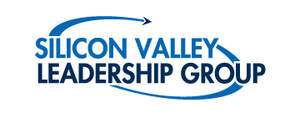 On Monday, September 24, the Silicon Valley Leadership Group (SVLG) hosted a meeting to introduce its members to the area’s light sources and how they help advance innovation and promote economic competitiveness. The event was sponsored by Congresswomen Zoe Lofgren and Anna Eshoo together with Berkeley Lab (LBNL) and SLAC National Accelerator Laboratory. The idea for the event arose from a discussion a few months ago between Berkeley Lab Director Paul Alivisatos and Congresswoman Lofgren about light sources and the Next Generation Light Source (NGLS).
On Monday, September 24, the Silicon Valley Leadership Group (SVLG) hosted a meeting to introduce its members to the area’s light sources and how they help advance innovation and promote economic competitiveness. The event was sponsored by Congresswomen Zoe Lofgren and Anna Eshoo together with Berkeley Lab (LBNL) and SLAC National Accelerator Laboratory. The idea for the event arose from a discussion a few months ago between Berkeley Lab Director Paul Alivisatos and Congresswoman Lofgren about light sources and the Next Generation Light Source (NGLS).
In their original invitation to the SVLG, Lofgren and Eshoo wrote, “There is a great deal of excitement about the ongoing development of a fourth generation light source at LBNL, and the success of the one recently built at SLAC. These new light sources allow for an even faster, brighter and clearer picture than anywhere else in the world.” The SVLG pointed out that many Fortune 500 companies as well as small businesses and start-ups already use these facilites and listed a few examples:
- The Bay Area Photovoltaic Consortium—an industry-supported program that counts GE, DuPont, Bosch, and Corning among its members—is working with Berkeley Lab, SLAC, and other institutions to develop advanced solar energy technologies.
- SEMATECH, a semiconductor consortium of industry leaders including Intel, IBM, GLOBALFOUNDRIES, HP, National Semiconductor, Micron, Dow, and others, has partnered with Berkeley Lab’s Center for X-Ray Optics to develop world-leading research and development infrastructure to study extreme ultraviolet lithography to accelerate feature size scaling to continue to drive the tremendous growth and progress enjoyed by the semiconductor industry over the past 50 years.
- General Electric’s “Durathon” sodium metal halide battery breakthrough required the use of light sources allowing them to understand the internal chemistry of a battery in real-time.
- Plexxikon—a Berkeley-based drug company—used Berkeley Lab’s and SLAC’s light sources to create a drug designed to disrupt malignant melanoma (skin cancer).
- Gilead—another Bay Area biotech company—utilized the ALS and SLAC’s SSRL to solve more than a hundred crystal structures to help in the development of HIV therapies.
- Roche, the Swiss pharmaceutical giant, used SSRL to help refine HIV drugs to thwart resistance.
- Additional companies working with the ALS and SSRL include Amgen, Applied Materials, Genentech, Hitachi Global Storage, Northrup Grumman, Saint-Goban, and Schlumberger.

Photo courtesy of Matt Beardsley (SLAC).
The SVLG was founded in 1978 by David Packard of Hewlett-Packard and represents more than 375 of Silicon Valley’s most respected employers. Leadership Group members collectively provide nearly one of every three private sector jobs in Silicon Valley and contribute more than $3 trillion to the worldwide economy.The two Congresswomen kicked off Monday’s meeting with “A Washington Perspective: The Value of National Laboratories to America’s International Competitiveness.” Alivisatos and SLAC Director Persis Drell then gave brief introductions to their respective facilities, followed by a high-energy round-table discussion led by current light-source users from various industries involved in pharmaceutical, semiconductor, battery, and photovoltaic research. Also in attendance representing Berkeley Lab were ALS Director Roger Falcone, ALS User Services Leader Sue Bailey, Ken Goldberg of the Center for X-Ray Optics, and Don Medley, head of Berkeley Lab’s Federal Government Relations Office.